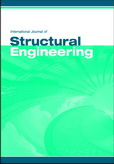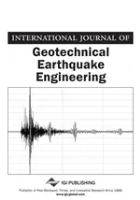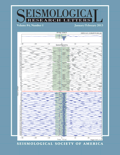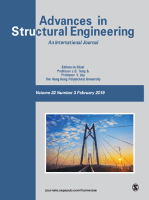
Earthquake Engineering and Engineering Vibration
Scope & Guideline
Advancing seismic resilience through innovative research.
Introduction
Aims and Scopes
- Seismic Performance Evaluation:
The journal emphasizes the evaluation of the seismic performance of various structures, including buildings, bridges, and other infrastructure, using both experimental and numerical methods. - Innovative Structural Design and Analysis:
Research on innovative design methodologies and analytical techniques for enhancing the resilience of structures against seismic events is a core focus area. - Soil-Structure Interaction:
The interaction between soil and structures during seismic events is extensively studied, highlighting the importance of ground conditions in seismic performance. - Real-time Monitoring and Control:
The journal explores advanced techniques for real-time monitoring and control of structures, including the use of sensors and artificial intelligence to enhance seismic resilience. - Mitigation Techniques:
Research on various mitigation techniques, including base isolation systems, dampers, and retrofitting methods, is a significant aspect of the journal's contributions. - Seismic Risk Assessment and Management:
The journal covers methodologies for assessing seismic risks and developing management strategies to minimize potential impacts on infrastructure and communities.
Trending and Emerging
- Advanced Computational Techniques:
There is an increasing trend towards the use of advanced computational methods, including machine learning and artificial intelligence, for predicting seismic responses and optimizing structural designs. - Resilience and Sustainability:
Research emphasizing the resilience and sustainability of structures in the face of seismic events is on the rise, highlighting the importance of long-term performance and environmental considerations. - Smart Monitoring Systems:
The development and application of smart monitoring systems that utilize IoT and data analytics for real-time assessment of structural health is a significant emerging theme. - Performance-based Design:
A shift towards performance-based design methodologies that focus on achieving specific performance objectives during seismic events is increasingly prevalent. - Seismic Risk Mitigation Strategies:
Emerging studies on innovative strategies for mitigating seismic risk, including community-based approaches and policy frameworks, are becoming more common. - Behavior of Non-traditional Structures:
Research on the seismic performance of non-traditional structures, such as those utilizing new materials or unconventional design approaches, is gaining momentum.
Declining or Waning
- Traditional Analytical Methods:
There has been a noticeable decline in the publication of papers focused solely on traditional analytical methods for seismic analysis, as researchers increasingly favor advanced computational techniques. - Static Analysis Approaches:
Static analysis methods, which were once prevalent, are being overshadowed by dynamic analysis techniques that better capture the complexities of seismic loading. - Conventional Material Studies:
Research centered on conventional materials (e.g., standard concrete and steel) without innovative modifications or enhancements has seen reduced emphasis, as the field moves towards exploring advanced materials and composites. - Generalized Vulnerability Assessments:
The focus on broad, generalized vulnerability assessments without specific context or application has diminished, as there is a growing demand for detailed, site-specific analyses. - Simple Structural Models:
Papers utilizing overly simplistic models for structural analysis are becoming less frequent, reflecting a shift towards more complex and realistic modeling approaches.
Similar Journals

Earthquake Science
Bridging Disciplines in Geoscience and EngineeringEarthquake Science is a prominent open access journal that has been serving the scientific community since its inception in 2009, published by KEAI PUBLISHING LTD. With an ISSN of 1674-4519 and an E-ISSN of 1867-8777, this journal has established itself as a significant platform for the dissemination of research in the fields of geology, geophysics, and geotechnical engineering, evident from its Q2 ranking in 2023 across these categories. Based in China, Earthquake Science aims to facilitate knowledge sharing and foster interdisciplinary collaboration by publishing a range of high-quality articles, reviews, and research papers demonstrating advancements in understanding seismic activity and its impacts. Its commitment to open access since 2015 ensures that valuable insights are available to researchers, professionals, and students globally, thereby supporting critical inquiries into earthquake mechanisms and risk management strategies. Explore the latest findings and contribute to the ongoing conversation in the evolving landscape of earthquake science.

International Journal of Structural Engineering
Exploring Solutions for Modern Engineering ChallengesInternational Journal of Structural Engineering, published by InderScience Enterprises Ltd, has established itself as a vital resource in the field of civil and structural engineering. With an ISSN of 1758-7328 and an E-ISSN of 1758-7336, this journal is dedicated to disseminating high-quality research that addresses contemporary challenges and innovations in structural engineering. The journal operates under a rigorous peer-review process, ensuring that only the most impactful and relevant studies are shared with the global community. Since its inception in 2009, the journal has been recognized for its contributions, earning a ranking in Q3 for civil and structural engineering under the 2023 Category Quartiles and occupying the 40th percentile in Scopus rankings. While currently not an open-access journal, it provides access to a wide array of original papers, reviews, and case studies that are crucial for fostering academic discourse and supporting the ongoing education of professionals and students alike. As it continues to expand its reach until 2024, the International Journal of Structural Engineering remains a cornerstone for those seeking to enhance their knowledge and practice in the dynamic realm of structural engineering.

Frontiers of Structural and Civil Engineering
Shaping the Future of Civil Engineering ResearchFrontiers of Structural and Civil Engineering, published by HIGHER EDUCATION PRESS, is a premier academic journal dedicated to advancing the fields of architecture, civil, and structural engineering. With an ISSN of 2095-2430 and E-ISSN of 2095-2449, this journal caters to the dissemination of high-quality research and innovative practices from 2012 onwards, highlighting important developments up until 2024. Ranked in the top quartile (Q1) for Architecture and Q2 for Civil and Structural Engineering in 2023, it holds an impressive Scopus ranking of #19 out of 189 in Architecture and #101 out of 379 in Civil and Structural Engineering, reflecting its impact and relevance in the scientific community. This journal invites contributions that demonstrate pioneering approaches, fostering collaboration among researchers, professionals, and students alike, and significantly contributes to the global knowledge base in the engineering disciplines.

International Journal of Geotechnical Earthquake Engineering
Exploring the dynamics of soil and structure in earthquake engineering.International Journal of Geotechnical Earthquake Engineering, published by IGI Global, serves as a pivotal platform for researchers and practitioners in the field of geotechnical engineering and engineering geology. Established in 2010, this journal has steadily promoted the dissemination of innovative research and advancements in understanding the impact of seismic activities on soil behavior and structural integrity. Operating out of the United States, it caters to a global audience and offers a range of articles that delve deep into the dynamics of earthquake engineering. With a 2023 Scopus ranking placing it in the 39th percentile among its peers and a Q4 designation in the relevant quartile, the journal actively seeks to elevate the discussion around geotechnical challenges associated with seismic events. While currently not classified as an Open Access journal, it remains committed to providing valuable insights that aid in the prevention and mitigation of geotechnical failures during earthquakes. Researchers, professionals, and students alike will find this journal an essential resource for the latest developments and practical applications in this ever-evolving field.

SEISMOLOGICAL RESEARCH LETTERS
Advancing seismic science for a safer tomorrow.SEISMOLOGICAL RESEARCH LETTERS is a leading journal in the field of geophysics, published by the Seismological Society of America. With its ISSN 0895-0695 and E-ISSN 1938-2057, this prestigious publication serves as a vital platform for disseminating groundbreaking research and advancements in seismological science. The journal boasts an impressive Q1 categorization in the 2023 rankings and ranks 23rd out of 165 in Earth and Planetary Sciences, Geophysics, placing it within the 86th percentile among its peers. Spanning an illustrious history from its origination in 1984 to its ongoing contributions through 2024, it is dedicated to fostering a deeper understanding of seismic phenomena. Although it currently does not offer open access, researchers, professionals, and students can benefit from timely insights and comprehensive studies presented in its pages. Set within the heart of the United States, the journal stands as a cornerstone in geophysics, connecting a global community eager to advance their knowledge and impact in the field.

International Journal of Steel Structures
Bridging Theory and Practice in Steel EngineeringWelcome to the International Journal of Steel Structures, a distinguished publication dedicated to advancing the field of civil and structural engineering since its inception in 2010. Published by the Korean Society of Steel Construction (KSSC), this journal aims to provide a platform for researchers and professionals to share innovative findings and essential insights related to steel structures, emphasizing both theoretical and applied research. With an impact factor that reflects its growing recognition—ranking in Q3 within the civil and structural engineering category—the journal has positioned itself as a significant contributor to the body of knowledge in this vital field. Although currently not an open-access publication, it remains an invaluable resource for students and scholars keen on exploring contemporary challenges and advancements in steel construction. Located in Seoul, South Korea, the journal continues to evolve, converging its presence into the future, with publication efforts spanning through to 2024. Engage with us as we explore the innovative applications and developments in the realm of steel structures.

Bulletin of Earthquake Engineering
Empowering engineers with cutting-edge insights.The Bulletin of Earthquake Engineering is a premier journal published by Springer, dedicated to the field of earthquake engineering and its related disciplines. Established in 2003, this esteemed journal has evolved into a critical platform for disseminating cutting-edge research in Building and Construction, Civil and Structural Engineering, Geophysics, and Geotechnical Engineering and Engineering Geology, earning a distinguished position in the Q1 quartile across these categories. With an impressive ranking in Scopus, notably a rank of #8 in Earth and Planetary Sciences for Geophysics, the journal addresses urgent challenges in the mitigation of seismic risks and the enhancement of structural resilience. Researchers and practitioners benefit from a wealth of peer-reviewed articles, insights, and methodologies relevant to modern engineering practices aimed at improving safety and sustainability in earthquake-prone regions. The Bulletin of Earthquake Engineering embodies a commitment to advancing knowledge and practice in earthquake resilience, making it an invaluable resource for academics, industry professionals, and rising scholars alike.

Bulletin of the New Zealand Society for Earthquake Engineering
Transforming earthquake engineering with scholarly excellence.Bulletin of the New Zealand Society for Earthquake Engineering (ISSN: 1174-9857, E-ISSN: 2324-1543) is a leading scholarly journal published by the New Zealand Society for Earthquake Engineering, Inc., dedicated to advancing the field of earthquake engineering. Since its inception in 1970, the journal has provided a vital platform for the dissemination of innovative research, technical studies, and case reports related to civil and structural engineering, as well as geotechnical engineering and engineering geology. Recognized for its significant contributions, the journal holds a Q2 ranking in both the Civil and Structural Engineering and Geotechnical Engineering and Engineering Geology categories as of 2023. It serves as an invaluable resource for researchers, professionals, and students keen on enhancing their understanding of earthquake resilience and engineering practices. While the journal operates under subscription-based access, its rigorous peer-review process ensures that published articles meet the highest academic standards, making it a credible source for the global engineering community.

ADVANCES IN STRUCTURAL ENGINEERING
Elevating Knowledge in Civil and Structural EngineeringADVANCES IN STRUCTURAL ENGINEERING, published by SAGE PUBLICATIONS INC, is a leading journal dedicated to the advancement of knowledge in the fields of Building and Construction, as well as Civil and Structural Engineering. With a solid impact factor and a commendable Scopus ranking (Rank #60 in Building and Construction, Rank #105 in Civil and Structural Engineering), this journal stands at the forefront of academic research, providing a platform for high-quality articles that contribute significantly to the discipline. Covering a range of topics from innovative construction techniques to sustainable engineering practices, the journal aims to foster collaborative dialogue among researchers, industry professionals, and students alike. As of 2023, it boasts impressive category quartiles, ranking Q1 in Building and Construction and Q2 in Civil and Structural Engineering. ADVANCES IN STRUCTURAL ENGINEERING is a vital resource for those looking to stay abreast of emerging trends and groundbreaking developments in structural engineering, promoting an environment of continuous learning and application of best practices. With a convergence of research from 1999 to 2024, the journal not only emphasizes theoretical frameworks but also bridges the gap between academia and practical application in engineering projects.

Structural Concrete
Elevating Standards in Civil Engineering ResearchStructural Concrete, published by ERNST & SOHN, is a premier journal dedicated to the field of Civil and Structural Engineering, focusing on innovative research and advancements in concrete materials and technologies. With an impressive impact factor and a consistent ranking in the Q1 category of both Building and Construction and Civil and Structural Engineering, the journal stands as a vital resource for researchers, professionals, and students alike. It is indexed with notable Scopus ranks, underscoring its significance within the academic community. The journal spans a comprehensive scope (from 2001 to the present) that encompasses diverse topics related to the behavior, design, and application of structural concrete. Although not an open access publication, it offers valuable insights and cutting-edge knowledge that contribute to the ongoing evolution of construction practices and materials science. Structural Concrete is an essential platform for sharing pioneering findings and fostering collaboration within this dynamic field.